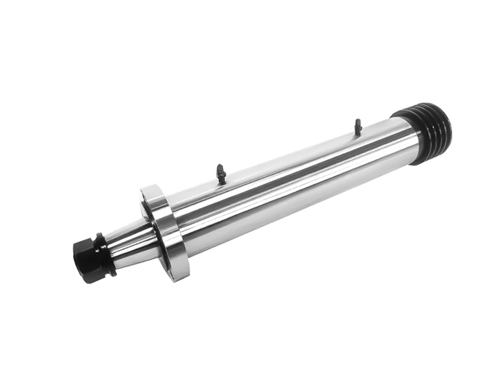The working principle of the automatic lathe for turning the inner ring of rolling bearings is based on the combination of automated numerical control technology and precision machining technology. Through program control, high-precision and high-efficiency turning processing is achieved. The core principle and process are as follows:
1、 Core working principle
Automated Control and Program Execution
The automatic lathe relies on the numerical control system to operate, and the operator pre writes the machining parameters (such as feed rate, cutting speed, spindle speed) and tool path into programs, which are input into the control terminal. After startup, the system automatically parses program instructions to drive the collaborative operation of various executing components without frequent manual intervention, ensuring standardized and repeatable processing.
High precision transmission and positioning
The lathe achieves precise displacement of the spindle, cutting tools, and workpiece through high-precision ball screws and linear guides. The spindle motor drives the inner ring blank to rotate, while the tool moves along the X and Z axes according to the program, and the two work together to complete the turning. The positioning accuracy can usually reach micrometer level, ensuring that the inner ring size meets the design tolerance.
Tool path optimization and cutting parameter matching
For different inner ring structures (such as channels and sealing grooves), the lathe uses specialized tools and plans the optimal path. For example, in the rough machining stage, large cutting depth and low speed are used to quickly remove excess material; In the precision machining stage, switch to high speed and low feed rate, and use hard alloy or CBN cutting tools to ensure surface roughness and roundness.
2、 Process flow and key technologies
Blank clamping and positioning
The inner ring blank (mostly forged or bar material) is automatically clamped by hydraulic chuck or spring chuck to ensure uniform positioning reference. Some lathes are equipped with automatic centering devices, which can quickly correct blank eccentricity and reduce clamping errors.
Multi process integrated processing
Modern automatic lathes usually integrate multi station tool towers, supporting multi process machining such as inner holes, outer circles, end faces, grooves, and chamfers in one clamping. For example, a certain model of lathe can complete all turning from blank to finished product in 15 minutes, significantly reducing auxiliary time.
Real time monitoring and feedback adjustment
The lathe is equipped with sensors to monitor cutting force, vibration, and temperature. When the parameters are abnormal, it automatically adjusts the feed or pauses processing to avoid tool collision or workpiece scrap. Some high-end models support online measurement, which detects the inner ring size in real-time through laser or contact probes and dynamically adjusts the tool compensation value.
3、 Performance advantages and application value
Efficiency and quality improvement
Compared to traditional lathes, automatic lathes have increased processing efficiency by 3-5 times and reduced scrap rates to below 0.5%. For example, after a certain bearing enterprise introduced an automatic lathe, the consistency of the inner ring groove size increased by 90%, significantly reducing the subsequent grinding allowance.
Adaptability and Flexibility
By replacing fixtures, cutting tools, and adjusting programs, the lathe can quickly switch and process different specifications of inner rings (such as deep groove ball bearings and cylindrical roller bearings), meeting the needs of multi variety and small batch production. Some models support flexible manufacturing system (FMS) docking, enabling 24-hour unmanned production.
Maintenance and cost optimization
The automatic lathe adopts modular design, with key components such as spindle and guide rail having a lifespan of over 20000 hours. Through preventive maintenance systems, tool wear or insufficient lubrication can be alerted in advance, reducing downtime. In the long run, the cost of single piece processing is reduced by about 40% compared to traditional methods.
 ch
ch English
English





